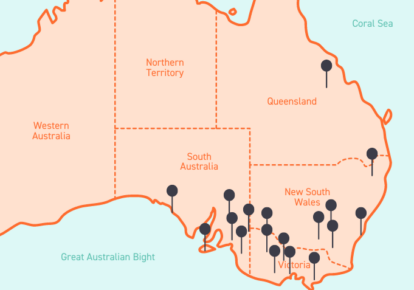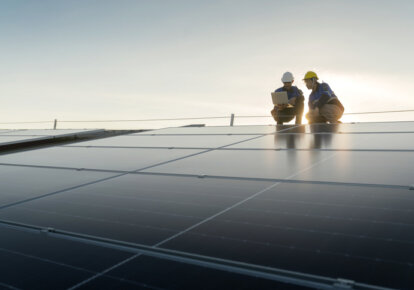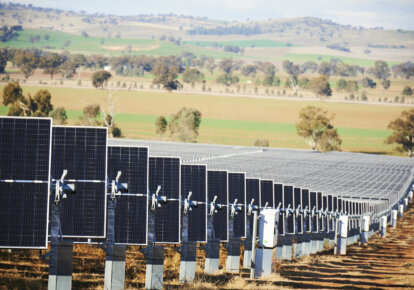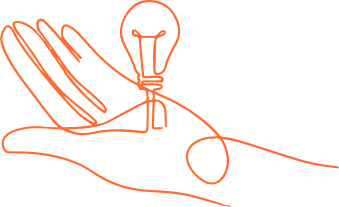Changes to your charges
November 2024
Peak Demand Reduction Scheme (PDRS) November
The Peak Demand Reduction Scheme (PDRS) is a certificate scheme introduced by the New South Wales government in 2022 and has returned to effect from 1 November 2024. The scheme encourages behaviours that reduce peak demand, helping with grid stability in NSW.
How does the PDRS work?
The scheme operates between 1 November and 31 March when electricity demand across NSW is expected to be at its highest. Like many certificate schemes, the PDRS is based on the creation and surrender of certificates. Certificates are created by activities that reduce peak demand.
As your electricity retailer, Flow Power is responsible for a proportion of the state-wide target for the number of PDRS certificates surrendered. Flow Power is required to either create or purchase this number of certificates and surrender them to meet our obligation.
There is a limited number of activities available to create certificates, however this list is expanding as the PDRS develops.
What does the PDRS mean for all NSW energy consumers?
The cost of creating or purchasing certificates will need to be recovered by retailers through a small additional charge on customer bills. The rate for the Summer 2024/25 season is $2.60/MWh, and we will charge all NSW customers this rate, unless you hold a valid exemption. Those with exemptions will be charged a rate that reflects their exemption percentage and will have this rate communicated to them by their Client Solutions Manager.
Questions about this change? We’re here to help.
Please contact your dedicated Client Solutions Manager to discuss your invoice or to learn more about the Peak Demand Reduction Scheme.
If you’d like to speak to a friendly Flow Power team member straight away:
1300 08 06 08
Or send a message via the chat button at the bottom of your screen. We’re online to help Monday – Friday, 9am – 5pm AEDT.
November 2023
Peak Demand Reduction Scheme (PDRS) November
The Peak Demand Reduction Scheme (PDRS) is a certificate scheme introduced by the New South Wales government in 2022 and has returned to effect from 1 November 2023. The scheme encourages behaviours that reduce peak demand, helping with grid stability in NSW.
How does the PDRS work?
The scheme operates between 1 November and 31 March when electricity demand across NSW is expected to be at its highest. Like many certificate schemes, the PDRS is based on the creation and surrender of certificates. Certificates are created by activities that reduce peak demand.
As your electricity retailer, Flow Power is responsible for a proportion of the state-wide target for the number of PDRS certificates surrendered. Flow Power is required to either create or purchase this number of certificates and surrender them to meet our obligation.
There is a limited number of activities available to create certificates, however this list is expanding as the PDRS develops.
What does the PDRS mean for all NSW energy consumers?
The cost of creating or purchasing certificates will need to be recovered by retailers through a small additional charge on customer bills. The rate for the Summer 2023/24 season is $0.59/MWh, and we will charge all NSW customers this rate, unless you hold a valid exemption. Those with exemptions will be charged a rate that reflects their exemption percentage and will have this rate communicated to them by their Client Solutions Manager.
Questions about this change? We’re here to help.
Please contact your dedicated Client Solutions Manager to discuss your invoice or to learn more about the Peak Demand Reduction Scheme.
If you’d like to speak to a friendly Flow Power team member straight away:
1300 08 06 08
Or send a message via the chat button at the bottom of your screen. We’re online to help Monday – Friday, 9am – 5pm AEDT.
February 2023
Unaccounted for energy (UFE)
Customers will find a new line item on their bills, unaccounted for energy (UFE).
What is UFE?
UFE refers to the energy that is lost in the system, and isn’t accounted for in loss factors. UFE can arise from energy taken from unmetered connections to the grid, energy theft or where there are metering issues.
Why is UFE being charged to customers now?
Previously, UFE was paid for by the “local retailer”. The local retailer was the legacy retailer in that part of the network. However, following regulatory changes implemented in 2022 (these changes were called Global Settlement), the costs of paying for UFE is now shared across all retailers, including Flow Power.
For this reason, Flow Power customers will see a new line item referring to UFE, reflecting a share of the UFE allocated to Flow Power.
What is Global Settlement?
Prior to the introduction of Global Settlement, billing of retailers occurred through a process known as “Settlement by difference”. In order to work out how much energy each retailer should be billed for, AEMO used to meter the energy flowing into a local area, subtract the energy metered at the customers of independent retailers, and charge the leftover to the local retailer. This meant the local retailer had to pay for all of the unaccounted for energy.
Global settlement changed this billing approach. Now, each retailer is billed based on the energy flowing through their customers meters. Each retailer is also allocated their share of the unaccounted for energy.
A reminder about Ancillary Services Charges
Ancillary Services are used by AEMO to manage the power system safely, securely and reliably. Related ancillary service costs are dependent upon the amount of service required at any particular time.
Why are Ancillary Services Charges increasing?
In the July 2022 update, Flow Power notified customers that the Australian Energy Market Operator (AEMO) intervened in the spot market to ensure we maintained a reliable supply of electricity in June 2022. Part of this intervention was to direct generators to supply electricity into the market, despite prices being insufficient to cover their input costs. As a consequence of this, generators who supplied electricity into the market – and made a loss doing so – were due to be compensated by AEMO.
These compensation charges are usually collected by AEMO via electricity retailers on a pro rata basis and passed back to the generators. AEMO issued their determination of the additional compensation charges to retailers in January 2023 and as such Flow Power’s Ancillary Services charge has been varied accordingly.
Questions about these changes? We’re here to help.
Please contact your dedicated Client Solutions Manager to discuss your invoice or to learn more.
If you’d like to speak to a friendly Flow Power team member straight away:
1300 08 06 08
info@flowpower.com.au
Or send a message via the chat button at the bottom of your screen. We’re online to help Monday – Friday, 9am – 5pm AEDT.
November 2022
Peak Demand Reduction Scheme (PDRS)
The Peak Demand Reduction Scheme (PDRS) is a new certificate scheme introduced by the New South Wales government, starting on 1 November 2022. The new scheme encourages behaviours that reduce peak demand, helping with grid stability in NSW.
How does the PDRS work?
The scheme will operate between November and March when electricity demand across NSW is expected to be at its highest. Like many certificate schemes, the PDRS is based on the creation and surrender of certificates. Certificates are created by activities that reduce peak demand.
As your electricity retailer, we will be responsible for a proportion of the state-wide target for the number of PDRS certificates surrendered. Flow Power is required to either create or purchase this number of certificates and surrender them to meet our obligation.
For this first summer, there is a limited number of activities available to create certificates, but this should expand over time.
What does the new PDRS mean for all NSW energy consumers?
The cost of creating or purchasing certificates will need to be recovered by retailers through a small additional charge on customer bills. The rate for the Summer 2022/23 season is $0.59/MWh, and we will charge all NSW customers this rate, unless you hold a valid exemption. Those with exemptions will be charged a rate that reflects their exemption percentage and will have this rate communicated to them by their Client Solutions Manager.
Questions about this change? We’re here to help.
Please contact your dedicated Client Solutions Manager to discuss your invoice or to learn more about the Peak Demand Reduction Scheme.
If you’d like to speak to a friendly Flow Power team member straight away:
? 1300 08 06 08
? info@flowpower.com.au
Or send a message via the chat button at the bottom of your screen. We’re online to help Monday – Friday, 9am – 5pm AEDT.
July 2022
Ancillary Services Charges (including RERT Recovery Charge for NSW and QLD Customers)
Ancillary Services are used by AEMO to manage the power system safely, securely and reliably. Related ancillary service costs are dependent upon the amount of service required at any particular time.
In June 2022, following a period of prolonged high spot prices, AEMO capped the spot price at $300/MWh. A few days later, AEMO suspended the spot market and began directing generators to run to ensure a secure and reliable supply of electricity for consumers. These interventions by AEMO are considered Ancillary Services and the associated costs are passed onto retailers.
During the same period, AEMO deployed the RERT mechanism in Queensland and New South Wales to maintain grid stability and avoid power outages. Through RERT, some electricity consumers are paid to power down their sites. AEMO passes the cost of paying consumers that were able to power down onto retailers.
As such, the Ancillary Service charge on your invoice has increased in June 2022. A credit and rebill will be applied once actual costs are known, including a one-off AEMO RERT Recovery Charge for Queensland and New South Wales customers (expected July 2022).
Questions about this change? We’re here to help.
Please contact your dedicated Client Solutions Manager to discuss your invoice or to learn more about the RERT mechanism.
If you’d like to speak to a friendly Flow Power team member straight away:
? 1300 08 06 08
? info@flowpower.com.au
Or send a message via the chat button at the bottom of your screen. We’re online to help Monday – Friday, 9am – 5pm AEDT.
March 2022
There will be a one-off charge for Queensland customers on their March invoices.
What is the change to Queensland energy customers’ charges in March 2022?
We’d like to advise our customers that during February 2022, electricity prices in Queensland were elevated, particularly on 1st of February.
Due to this, Queensland customers will have a one-off charge on their invoice called AEMO RERT Recovery Charge – QLD which relates to your site’s consumption during the RERT event on 1st February 2022.
Why is there a one-off RERT recovery charge?
Due to consecutive days of high temperatures (increasing demand) and then further exacerbated by low availability of thermal generators (reducing supply) resulted in the elevated prices experienced in Queensland.
Unfortunately, several Queensland thermal generators were unavailable due to scheduled and emergency maintenance.
This resulted in the Australian Energy Market Operator (AEMO) deploying the Reliability and Emergency Reserve Trader (RERT) function.
In extreme instances of pressure on the grid, AEMO uses RERT to maintain power system reliability and system security using reserve contracts.
Through RERT, some electricity consumers are paid to power down their sites. AEMO passes the cost of paying consumers that were able to power down onto retailers who typically collect it from their customers.
Questions about this change? We’re here to help.
Please contact your dedicated Client Solutions Manager if you are interested in discussing your invoice or learning more about the RERT mechanism.
If you’d like to speak to a friendly Flow Power team member straight away:
? 1300 08 06 08
? info@flowpower.com.au
Or send a message via the chat button at the bottom of your screen. We’re online to help Monday – Friday, 9am – 5pm AEDT.
February 2022
What are the changes to energy customer charges in February 2022?
The Clean Energy Regulator (CER) has declared that the 2022 surrender percentages for the Large-Scale Renewable Energy Target (LRET) and Small-Scale Renewable Energy Scheme (SRES) are:
- LRET = 18.64% (0.53% increase from 2021)
- SRES = 27.26% (5.64% decrease from 2021)
Why are LRET and SRES surrender percentages changing?
The LRET and SRES initiatives aim to incentivise the development and installation of large and small scale renewable energy projects, like large-scale wind and solar farms and small-scale solar on residential properties.
The Clean Energy Regulator (CER) requires electricity retailers to procure and surrender certificates generated from qualifying projects, to support these initiatives. This charge is passed on to customers in their monthly invoices.
Who will this change affect?
This change will affect customers with fixed certificate prices only.
What change will you see on your invoice?
On your February consumption invoice (issued in March), there will be a rebilled line item called ‘Credit Rebill for updated LRET and SRES surrender percentages’.
The reason for the rebill is that the 2022 surrender percentages were unknown at the time, so Flow Power used the 2021 surrender percentages.
March 2020
AEMO RERT charges
To make sure the lights stayed in summer 2020, AEMO worked with retailers and energy users to set up the RERT. Many Flow Power customers were involved in the program that paid users to reduce their demand on the grid during peak times.
AEMO called on energy users across the National Energy Market to power down in line with market events this summer. A number of Flow Power customers reduced their demand on the grid to help to manage their costs and support the system.
Those customers who participated received a RERT payment from AEMO, which shows as credit line item on your monthly invoice.
The AEMO RERT program is paid for by all energy users. Customers see a line item amounting to the portion of the RERT cost on invoices.
March 2020
FCAS and Direction charges (SA&VIC only)
On January 31 2020, extreme weather saw a tornado down high-voltage transmission lines in Victoria, disconnecting the main interconnector between South Australia and Victoria.
This effectively islanded South Australia from the rest of the National Energy Market. While energy prices in the wholesale market were low, being islanded from the grid limited South Australia’s capacity for Frequency Control Ancillary Services (FCAS).
In South Australia, FCAS can only be supplied by gas generators and the Hornsdale Power Reserve. As gas units don’t usually run, when they do it’s more expensive. This pushed FCAS prices much higher than normal. Typically, FCAS charges are only a small portion of your electricity bill. However, during this event FCAS prices were much higher than normal; they breached the Cumulative Price Threshold requiring AEMO to step in and cap the price at $300/MWh.
Additionally, AEMO issued directions to specific generators requesting them to run when they normally wouldn’t, in both South Australia and Victoria. This also adds cost that must be recovered from the market.
You will see a charge to cover your share of FCAS and Direction charges passed through by AEMO.
February 2020
Environmental certificates
In CY20, the surrender percentage of STC and LGC increased provisionally by 2.5%. The LGC and STC rates on bills were reflective of this.
There was also an increase in VEEC (Victorian Energy Efficiency Certificate) charges for Victorians. This was due to changes made in the Victoria Energy Upgrades programme which resulted in less VEEC creation and higher spot prices.
March 2019
AEMO RERT
To make sure the lights stayed on in summer 2019, AEMO worked with retailers and energy users to set up the RERT. Many Flow Power customers were involved in the program that paid users to reduce their demand on the grid during peak times.
AEMO called on users in SA and Victoria on January 24 and 25 to power down in line with a market event. For the second year running, Flow Power customers reduced their pressure on the grid by 50% – helping to manage their costs and support the system. Those customers who participated also received a RERT payment from AEMO, which showed as credit line item on customer’s monthly invoice.
The AEMO RERT program is paid for by all users and customers will see a line item amounting to your portion of the RERT cost on your invoice this month.
February 2019
Update on Powercor distribution charges
Are you based in Western Victoria? If so, you’re probably in Powercor’s distribution network.
This month, you might see an adjustment line item on your bill. Let us breakdown what this is.
On November 23, 2018 Powercor changed the way it charged for losses on parts of its network, adopting a lower-cost losses code. The lower cost was applied retrospectively from September 24, 2018 onwards.
While we passed the lower price onto impacted customers, you wouldn’t have noticed a credit on your previous bills, as the credits were held by AEMO.
On February 19, 2019, Powercor reverted back to its previous losses code, re-applying the higher changes retrospectively from September 24, 2018 onwards – again. Under its rules of operation, this is possible.
So, what does this mean for you?
Between November 23, 2018 and February 10, 2019, we billed impacted customers at the lower rate for network losses. Based on the latest changes by Powercor, we now need to re-calculate and charge the difference as an adjustment to impacted customers on their February bills.
(Please note, Flow Power passes through network charges at cost).
2018
July 2018 – Updates to AEMO Pool Fees
Who thought the government would ever remove a tax? Well they have. As of 1 July 2018, AEMO Pool Fees no longer attract GST. This will be reflected in all Flow Power bills
April 2018 – Updates to AEMO Emergency Reserve Trader charges (SA & VIC only)
To make sure the lights stayed on this summer, AEMO worked with retailers and energy users to set up the RERT. Many Flow Power customers were involved in the program that paid users to reduce their demand on the grid during peak times.
AEMO called on users in SA and Victoria on January 19 to power down in line with a market event. Flow Power customers reduced their load on the grid by 50% – helping to manage their costs and support the system. Those customers who participated will also receive a payment from AEMO, which will show as a new invoice credit line item on the bill.
All customers will see a new line item that is your portion of the RERT cost on your invoice this month.
We are working with AEMO to understand the best way to manage these costs for you.

Please contact your dedicated Client Solutions Manager to discuss your invoice or to learn more about the Peak Demand Reduction Scheme.
If you’d like to speak to a friendly Flow Power team member straight away:








